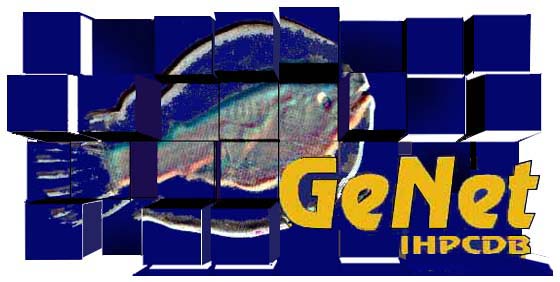 Gene Networks Database
Gene Networks Database
Strongylocentrotus
purpuratus Genes in Development: Cell-type
specific genes
Spec3
Function
Spec3 is a single copy gene whose product is involved
in ectodermal ciliogenesis (Eldon et al., 1987).
Protein
Spec3 is an ectoderm-specific ciliary structural protein.
It is a hydrophobic protein with the molecular mass of 21.6 kD.
The carboxy-terminal part of this
protein contains two long hydrophobic stretches, 31 and
37 residues long, separated by short hydrophilic regions
of six to eight residues.
The presence of these two distinct hydrophobic stretches
suggests that the Spec3 protein contains two
alpha-helical domains that either span the lipid bilayer
or are associated with some other hydrophobic
environment (Eldon et al., 1987).
SWISS_PROT: P16537
Subcellular location
Cytoplasm of hatching blastula stage embryos (Eldon et al., 1990).
Expression Pattern
mRNA level
Temporal accumulation
Method: in situ hybridization
Reference: Eldon et al., 1987
| Stage | Egg |
Cleavage |
Hatching blastula |
Mesenchyme blastula |
Gastrula |
Prism |
Pluteus |
| Level | Low level |
Accumulate rapidly |
Increase 50-fold |
Decline abruptly |
Remain constant |
Increase | Increase again |
The Spec3 mRNA, 2.0 kb in length, is present at low
levels in unfertilized eggs but accumulates rapidly
during cleavage, increasing 50-fold by hatching blastula
stage. Message levels then decline abruptly, remain constant
during mesenchyme blastula and gastrula stages, and
increase again during prism and pluteus stages.
Deciliation and regeneration of cilia in
gastrula-stage embryos results in a four- to fivefold
increase in Spec3 mRNA levels, implying that the Spec3 gene product is
associated with ciliogenesis (Eldon et al., 1987).
Spatial localization
Method: in situ hybridization
Reference: Eldon et al., 1987
| Stage | Early blastula |
Late blastula |
Gastrula |
Pluteus |
| Tissue | All blastomeres |
Ectoderm (animal hemisphere) |
Ectoderm |
Ciliary band, other ectoderm cells |
In situ hybridization shows that
although Spec3 message accumulates in all blastomeres
at early blastula stages, it later becomes restricted
to ectoderm. By late blastula stage, hybridization is
strongest in the animal hemisphere.
At gastrula, signals are variable over ectoderm,
and by pluteus, grains are concentrated in the ciliary
band, though present in other ectodermal cells as well (Eldon et al., 1987).
Sequences
GenBank
Regulatory Regions
Regions
Regulatory Connections
Upstream Genes |
Spec3 |
Downstream Genes |
Evolutionary Homologues
- Spec1 Strongylocentrotus purpuratus
- Spec2c Strongylocentrotus purpuratus
- Spec2d Strongylocentrotus purpuratus
- Spec2a Strongylocentrotus purpuratus
- LpS1 Lytechinus pictus
- Spec family genes of other sea urchins
Links
Bibliography
![[Previous]](arrow-1.gif) UrchiNet
UrchiNet![[Up]](arrow-3.gif) Search the GeNet
Search the GeNet
Comments are welcome to Sveta Surkova
Copyright © 1997 GeNet Team
 Gene Networks Database
Gene Networks Database